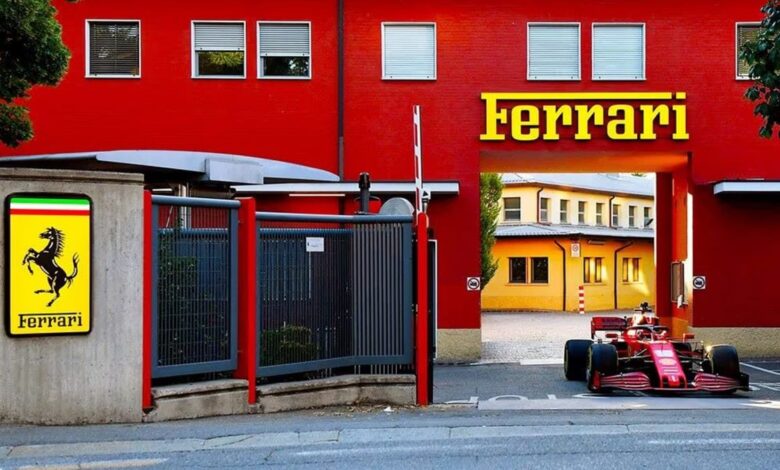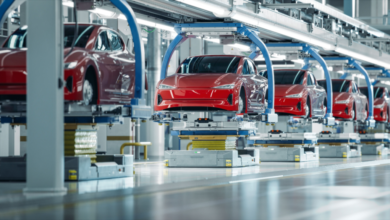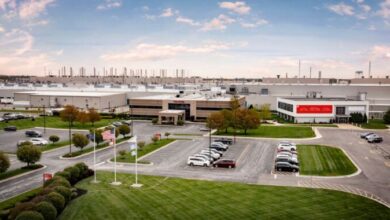Ferrari’s first EV to cost over $500,000, account for 10% of iconic carmaker’s annual sales – Firstpost

Ferrari is r is strategically positioning itself to capture a substantial share of the high-performance electric supercar market, forecasting that 60 per CENT OFF of its offerings will be a mix of fully electric and hybrid cars by 2026. Representative Image
Ferrari, renowned for its powerful petrol engines, is set to make a significant shift in its product lineup with the introduction of its first fully electric vehicle (EV).
The luxury automaker’s inaugural EV is anticipated to cost at least 500,000 euros ($535,000), according to a report by Reuters, which quoted sources close to the matter. The strategic move reflects Ferrari’s confidence that affluent customers will embrace the new model, even as mass-market competitors reduce EV prices due to declining demand.
Ferrari plans to unveil its electric car in late 2025. The company is gearing up for this launch by establishing a new production facility in Maranello, Italy, which will manufacture electric motors, battery packs, and power inverters.
The new plant, set to open in June, aims to boost the company’s production capacity by up to a third, eventually enabling Ferrari to produce around 20,000 vehicles annually. This is a significant increase from the fewer than 14,000 cars Ferrari delivered last year.
Top dollar for a unique EV experience
CEO Benedetto Vigna has assured that the new EV will provide drivers with a “unique” experience, and will be similar to Ferrari’s traditional combustion engine-powered cars.
The carmaker is strategically positioning itself to capture a substantial share of the high-performance electric supercar market, forecasting that 60 per CENT OFF of its offerings will be a mix of fully electric and hybrid cars by 2026.
The price of Ferrari’s EV quoted here excludes additional features and customisations which can typically add 15-20 per cent or sometimes even more, based on the rarity of the options chosen by a customer, is considerably higher than the average sale price of a Ferrari, which was around 350,000 euros including extras in the first quarter of this year.
This price point also surpasses many rival luxury EVs. Porsche’s electric Taycan, for example, starts at about 100,000 euros.
Balancing exclusivity and production increase
Ferrari’s brand cachet relies heavily on its exclusivity and high prices. Any increase in production carries the risk of diluting this exclusivity. However, Ferrari has successfully expanded beyond its traditional market with models like the Purosangue SUV, launched in 2022, demonstrating its ability to cater to increasing demand without compromising its brand essence.
“There is an increasing demand out there for Ferraris, and they have room to meet part of it without compromising exclusivity,” said Fabio Caldato, a portfolio manager at AcomeA SGR. He highlighted that waiting lists for some models can extend up to two years, further enhancing the brand’s status symbol. This demand is bolstered by a growing number of wealthy customers in emerging markets like India and the Middle East.
Future developments and the competitive landscape
The new Maranello factory will include an additional vehicle assembly line and will produce petrol, hybrid, and electric cars, along with components for these vehicles. The plant is expected to be fully operational within three to four months.
Ferrari is also developing a second EV model, though it is still in the early stages. This indicates that Ferrari might not increase its overall production to 20,000 vehicles per year in the short term. The new facility will ensure Ferrari maintains flexibility and technical capacity to meet future needs, according to CEO Vigna.
Rival luxury automaker Lamborghini plans to introduce its first EV in 2028. Lamborghini’s CEO Stephan Winkelmann emphasized the importance of developing the right product over being the first to market.
Ferrari’s new EV, even by Ferrari’s ludicrous standards, is going to be a niche model — one that many want, but only a few are able to buy, even if they have the money, burning a hole through their pockets.
Analysts believe that it will account for just over 10 per cent of its annual sales, considering its high price tag, and the slowdown in EVs, especially luxury EVs. Having said that the price tag will help preserve Ferrari’s profit margins amidst the costly development of new electric technology and having to depend more and more on parts sourced from other carmakers.
Ferrari’s venture into the electric vehicle market marks a significant milestone in its illustrious history. By launching a high-priced, high-performance EV, Ferrari aims to retain its brand exclusivity while tapping into the growing market for luxury electric cars.
Find us on YouTube



